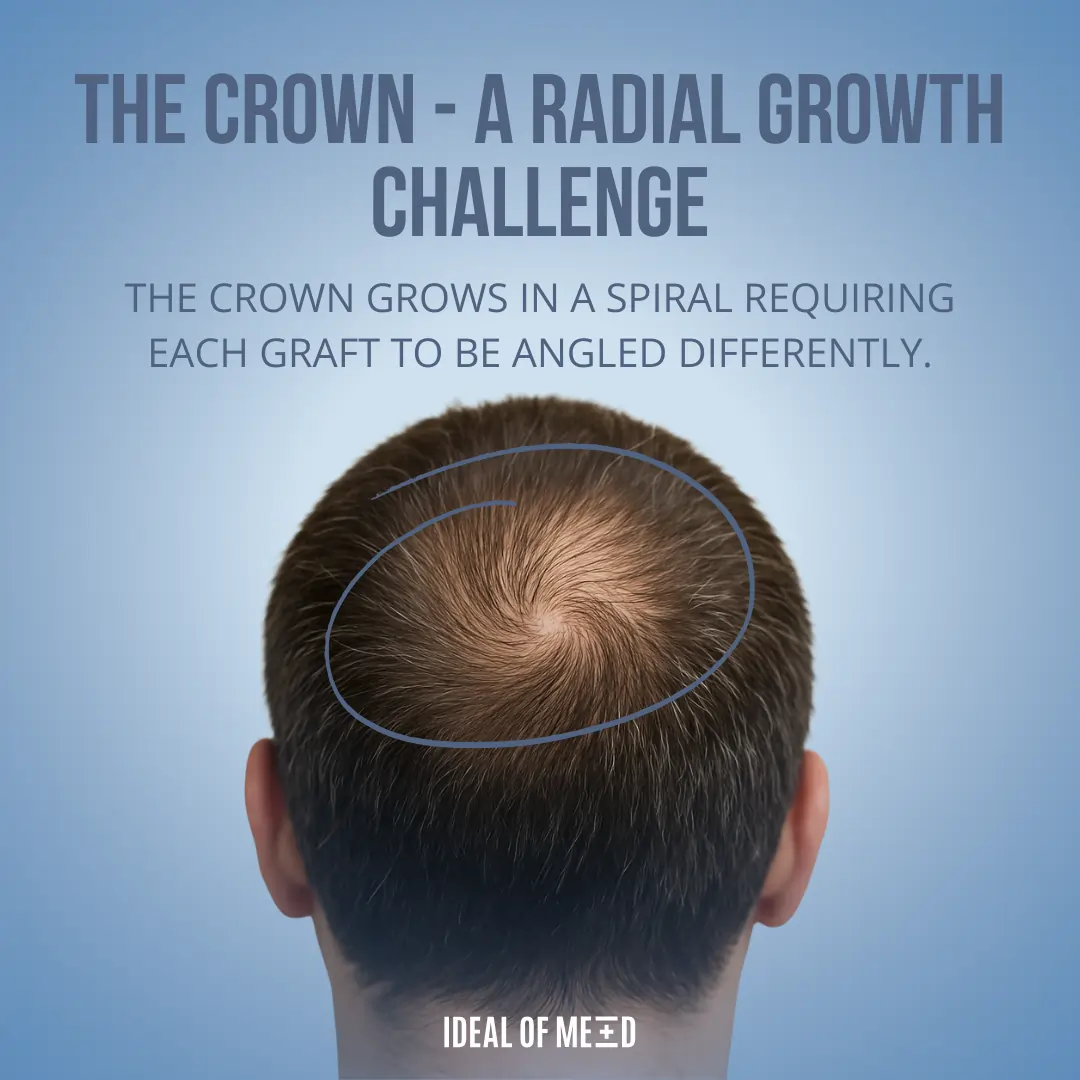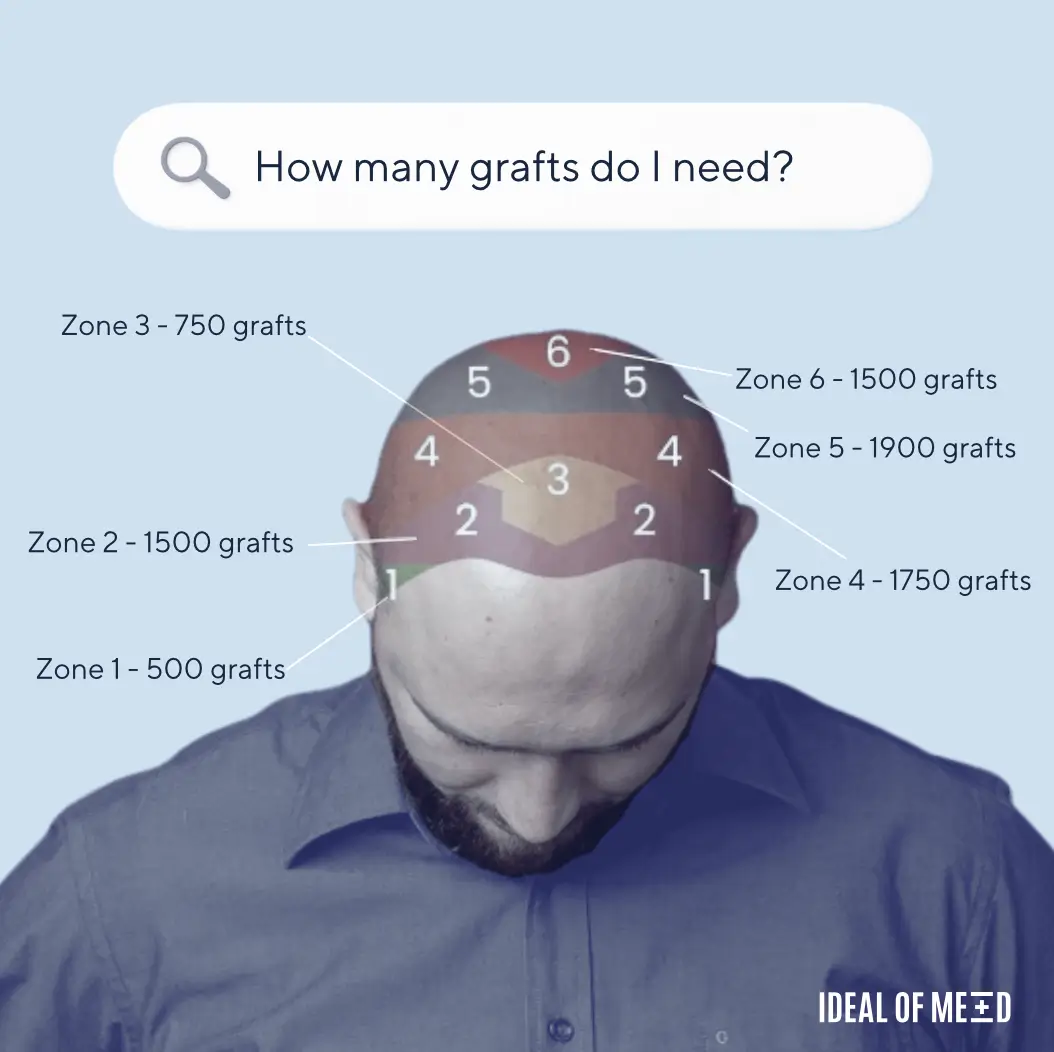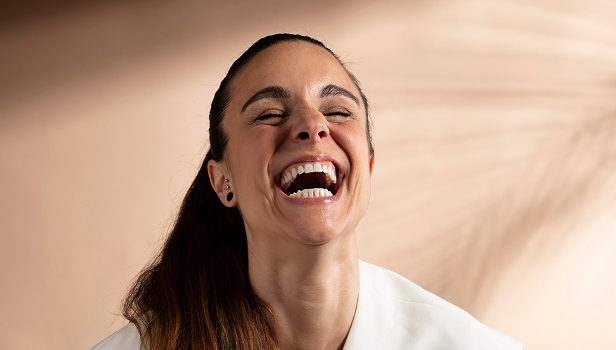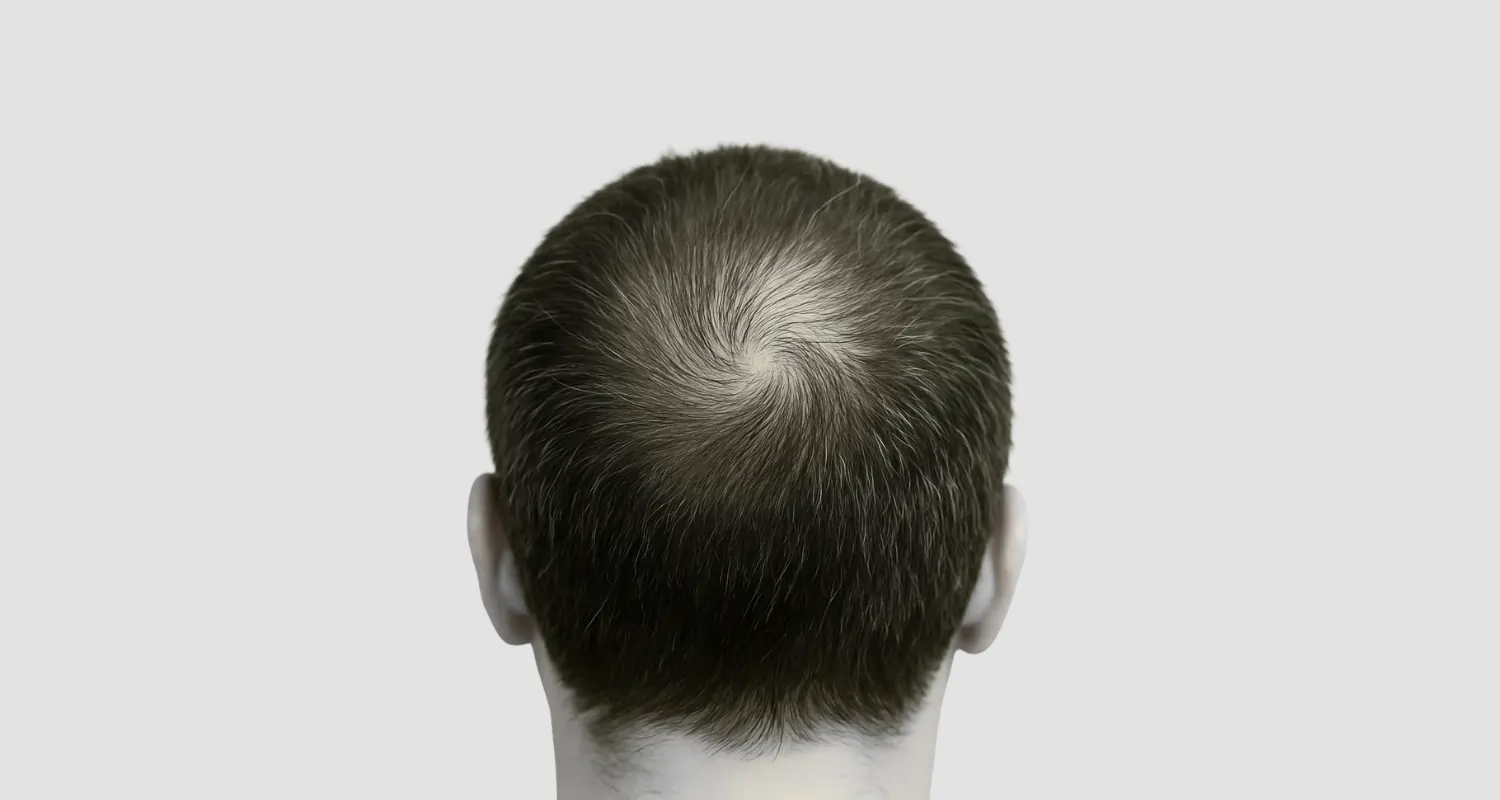Crown hair transplants are unlike any other part of hair restoration, and few clinics take the time to explain why. At Ideal of MeD, we believe patients deserve the full picture. The crown’s spiral growth pattern and broad surface area make it a technically demanding area to restore.
This guide explores why a crown transplant take more time to perform and to fully mature, and why the precision it requires leads to results that are well worth the wait.
What is a Crown Hair Transplant?
Crown hair transplantation targets the vertex area at the back of the scalp, where many men and some women experience progressive hair thinning or complete baldness. Unlike more visible regions like the hairline, the crown has its own set of technical challenges.
It’s often more difficult and time-consuming to transplant, but the rewards are significant: a natural-looking, permanent restoration of one of the most stubborn areas of hair loss.

The Crown’s Unique Complexity
The crown, or vertex, features a distinct radial or spiral growth pattern. This “whorl” means that hair in this area grows outward in a circular motion, unlike the mostly uniform direction of frontal hair. Successfully recreating this pattern requires meticulous surgical planning. Each follicular unit must be implanted at a carefully calculated angle to match the natural swirl.
This adds time and complexity to the procedure. The surgeon must adjust their angle of approach for each graft, often repositioning themselves around the patient repeatedly. Unlike a hairline transplant, which can proceed more linearly, a crown transplant involves varying angles and directions across the entire area.
Additionally, each patient’s whorl is unique. There’s no one-size-fits-all pattern, so a high level of skill and artistry is required to replicate it naturally. At Ideal of MeD, our surgeons are trained to reproduce this intricate design using techniques such as ICE Sapphire Follicular Unit Extraction (FUE) and, where appropriate, ICE Direct Hair Implantation (DHI) with a Choi implanter pen.
More Grafts, More Time
The crown often represents a larger surface area than the frontal scalp. When hair loss in the crown becomes significant, the bald spot can span a wide zone, requiring a large number of grafts to achieve adequate coverage and density. Since every follicle is individually harvested and implanted, this significantly increases surgical time.
Sometimes, especially with extensive crown baldness, multiple sessions may be required to complete the restoration. Ideal of MeD’s medical team assesses each patient individually to determine whether a one-session or staged approach will yield the best and safest results.

Why Crown Hair Transplant Results Take Longer to Appear
One of the most commonly overlooked aspects of crown transplantation is the timeline for visible results. It is entirely normal for the crown to take longer than other areas to show growth. Here are the main reasons why:
- Radial Growth Spreads Hair More Thinly: Because crown hair grows in a circular direction, even after new grafts take root, the emerging hairs spread outward. This reduces the perception of density compared to the frontal area, where hairs grow forward in a uniform direction.
- Circulation and Healing: Some evidence suggests the crown has slightly lower blood circulation than other parts of the scalp, potentially influencing the speed of healing and early hair growth.
- Delayed Cosmetic Maturity: While transplanted hair typically begins to grow around 3-4 months post-surgery, crown hair may look finer or less dense at first. Full cosmetic maturity often occurs at 12-18 months, compared to 9-12 months for the hairline.
- Harder to Monitor Progress: Patients cannot easily see the crown without mirrors or photos, which may create the impression that growth is slower, even if it’s on track.
Ideal of MeD ensures that patients are fully informed about these timelines, so expectations remain realistic. We provide regular follow-up and monitoring to reassure patients that their crown transplant is progressing as expected.
Precision Techniques at Ideal of MeD
Ideal of MeD primarily utilizes the ICE Sapphire Follicular Unit Extraction (FUE) method for crown transplants. This technique involves individually extracting hair follicles from the donor area and placing them one by one into the crown using micro-incisions.
FUE is ideal for crown work due to the high degree of control it offers over each graft’s angle, direction, and depth — all of which are critical for recreating the natural swirl pattern of the crown.
The radial growth of the crown requires surgeons to adjust the implantation angle for nearly every graft. FUE allows this level of fine-tuned manipulation while minimizing trauma to the scalp and reducing visible scarring. Because of the precision required, crown procedures with FUE tend to take longer than other regions, but this extra time translates directly into superior, natural-looking results.
In areas such as the temples, mid-scalp, or hairline, where hair grows in more uniform directions and finer control over density and direction is required, Ideal of MeD may also use ICE Direct Hair Implantation (DHI).
DHI uses a Choi implanter pen that allows follicles to be placed directly into the scalp without pre-making channels. This technique is especially advantageous in smaller or more angular areas where precision and density are priorities. However, for the unique requirements of the crown, FUE remains the gold standard.
By combining expert surgical technique with tailored use of FUE and DHI based on each region’s needs, Ideal of MeD delivers refined and natural results that respect the anatomical and aesthetic nuances of the scalp.
Read more about ICE FUE Sapphire hair transplant.
Enhancing Recovery with Supportive Therapies
Although the transplant technique is central to success, Ideal of MeD complements the procedure with optional post-operative therapies that can accelerate healing and support follicle growth:
- PRP (Platelet-Rich Plasma): A concentrated serum derived from your own blood, injected into the scalp to promote healing and boost the growth phase of transplanted follicles.
- Exosomes: Stem-cell-derived vesicles containing regenerative signals that help reduce inflammation and improve the cellular environment around new grafts.
- Hyperbaric Oxygen Therapy (HBOT): A series of sessions in a pressurized chamber that increases oxygen saturation in the bloodstream, accelerating wound healing and tissue recovery.
These therapies are available as part of Ideal of MeD’s premium and executive packages or as optional add-ons, offering patients a chance to enhance their recovery and see results sooner, even though full maturity in the crown still takes time.
Why Crown Hair Transplants are Worth the Wait
A crown transplant can dramatically improve your appearance from all angles, not just face-on. Once fully grown, the new hair looks completely natural and is permanent, as the donor follicles are resistant to the hormone that causes hair loss.
Though it may take more time to perform the surgery and see final results, the payoff is long-lasting confidence and coverage in an area that is otherwise difficult to treat. Patients frequently report increased self-esteem, relief from styling stress, and a general sense of restored youth once their crown is full again.
In short, while crown transplants require patience, they deliver results that are well worth it. At Ideal of MeD, we take pride in guiding patients through every stage of the process, from precise planning and advanced surgical execution to supportive recovery care and long-term follow-up.
For those ready to reclaim the crown, the journey may be longer, but the reward is permanent and powerful.
FAQ: Crown Hair Transplants at Ideal of MeD
Often, yes. The crown covers a larger surface area and the radial pattern causes hair to spread out more, which can make the area look thinner unless enough grafts are used. Achieving good density usually requires a higher graft count.
In the crown, early growth can appear finer or less dense due to the way hair spreads in the spiral pattern. Full cosmetic maturity usually takes longer than in other areas, sometimes up to 18 months.
Yes, Ideal of MeD primarily uses FUE for crown restoration because it allows precise control over angle, direction, and depth, critical for replicating the natural swirl. FUE also minimizes scarring and ensures high graft survival when done correctly.
While DHI with Choi implanter pens offers excellent control, it’s typically better suited for areas like the hairline or temples where directionality is more linear. For the crown, the flexibility and control of FUE makes it the preferred choice.
Yes. At Ideal of MeD, we offer hyperbaric oxygen sessions and PRP therapy or MSC exosomes to support healing and stimulate follicle activity. These treatments help create the ideal environment for growth, especially in complex areas like the crown.
Transplanted hair is typically taken from donor zones that are resistant to DHT, the hormone responsible for hair loss. Once grafts are successfully established, the results in the crown are considered permanent and will grow like natural hair.




